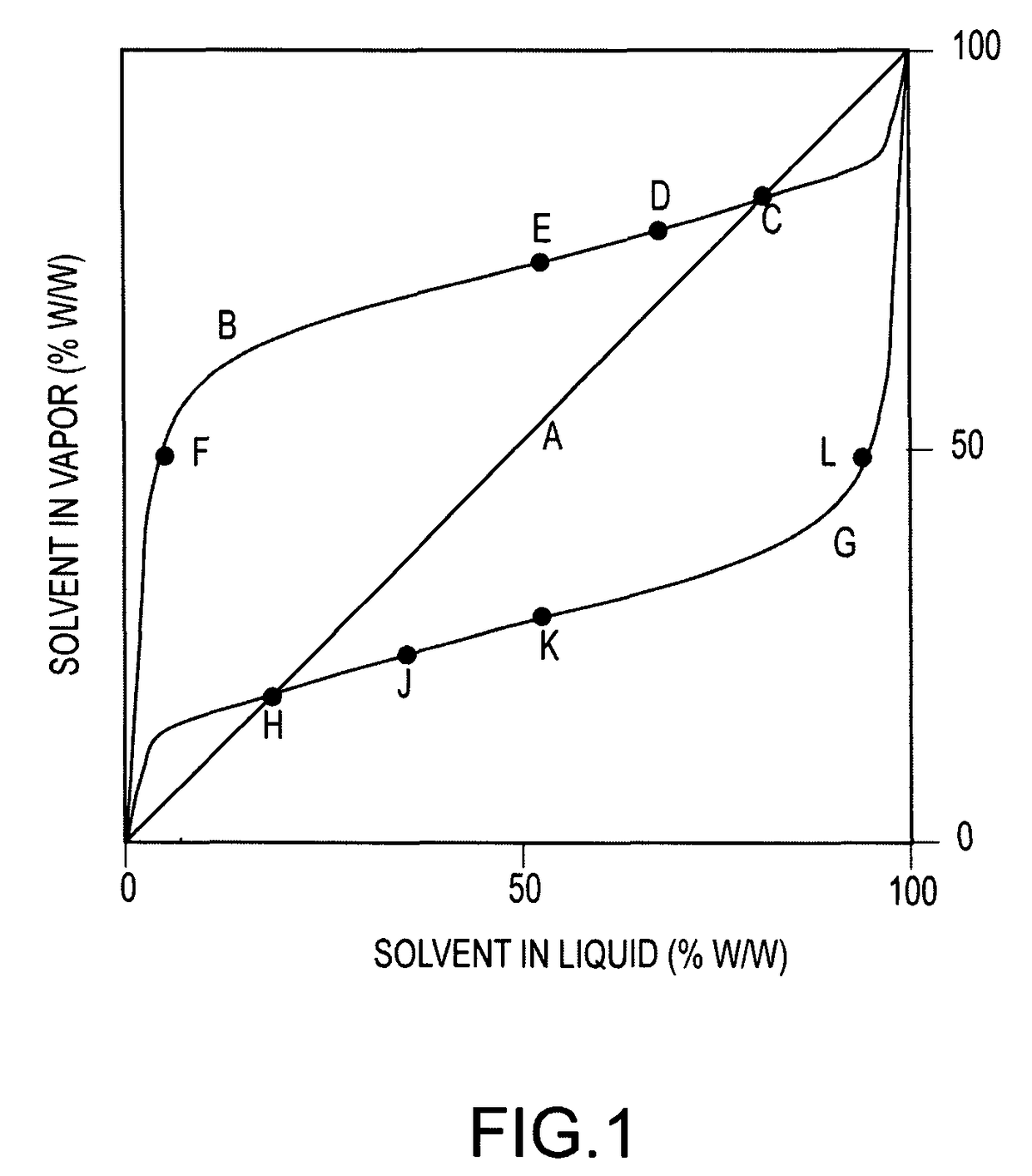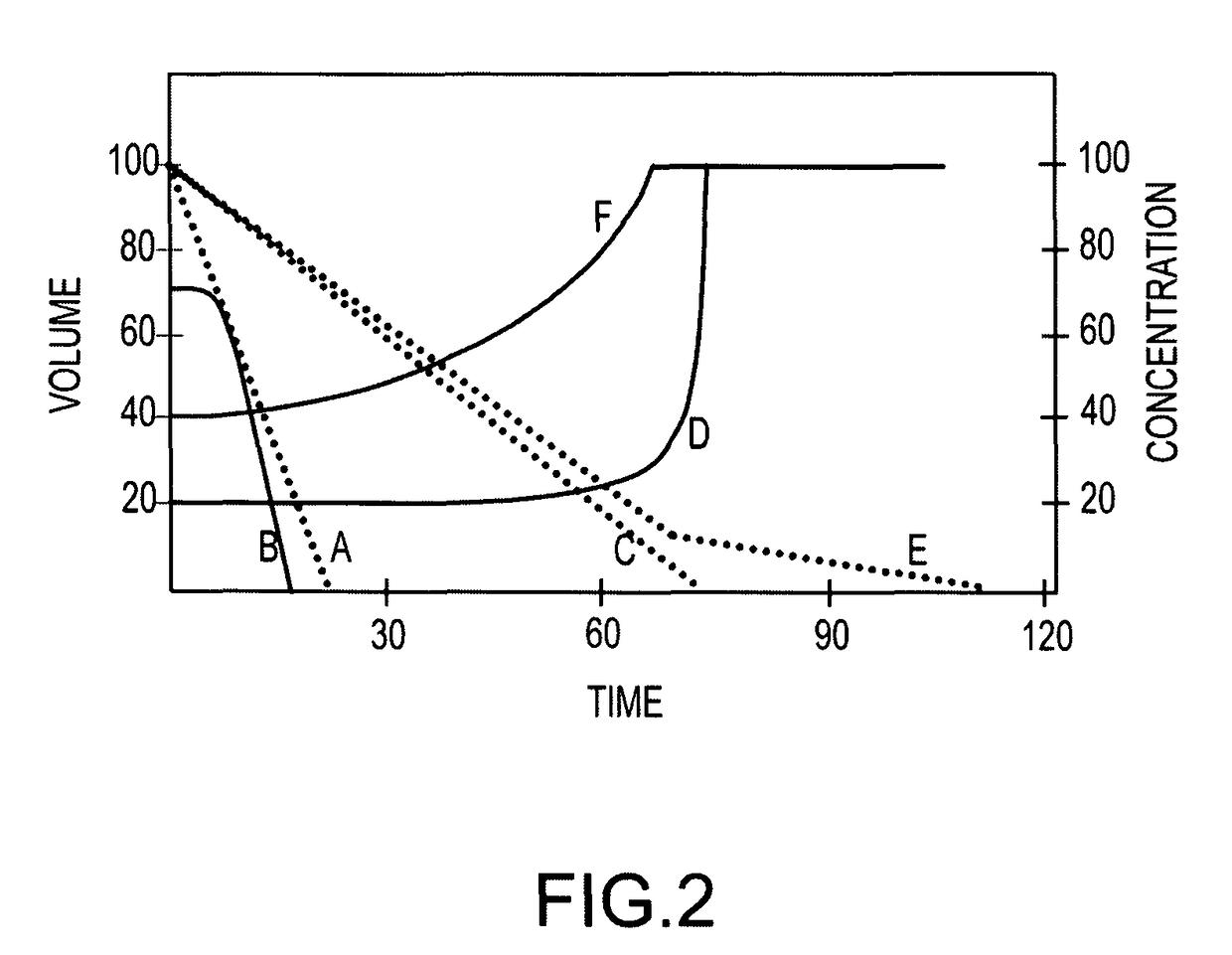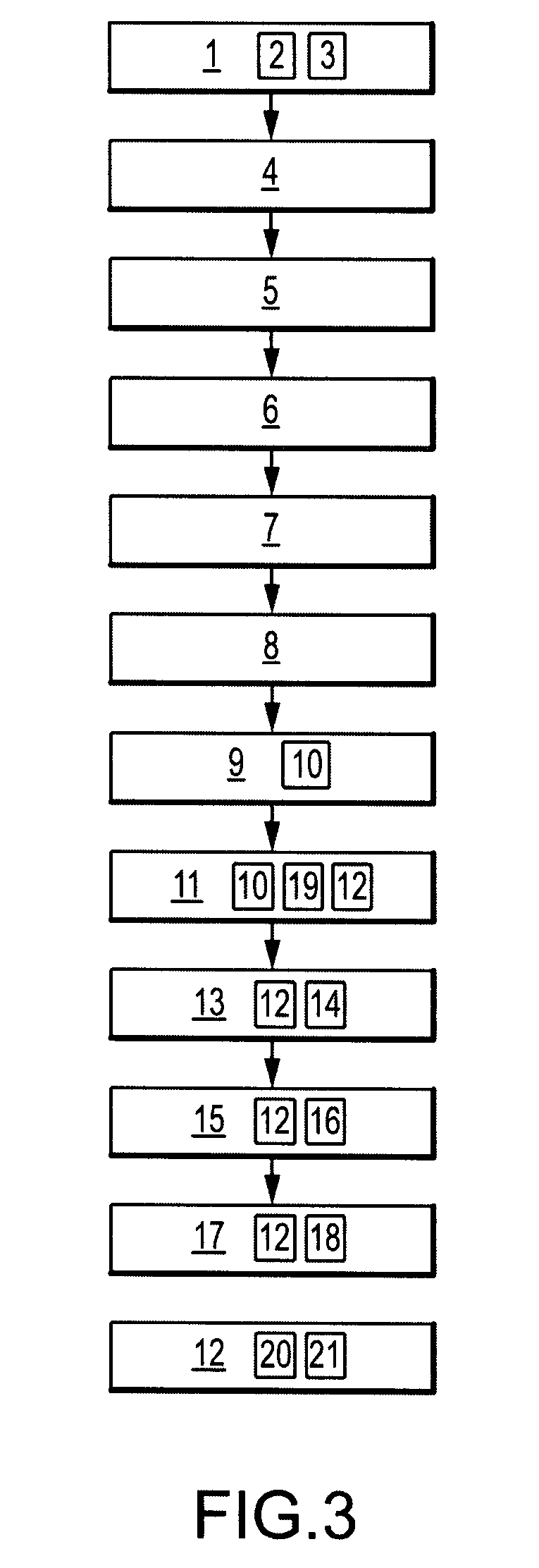Differential evaporation potentiated disinfectant system
a disinfectant system and evaporation potentiation technology, applied in the direction of biocide, dermatological disorder, drug composition, etc., can solve the problems of flammable materials being more costly to transport, certain substantial problems remain unaddressed with their use, and relatively high vapor pressure and relatively low flashpoints (fp), so as to reduce the population of viable bacteria and increase the level of antimicrobial activity
- Summary
- Abstract
- Description
- Claims
- Application Information
AI Technical Summary
Benefits of technology
Problems solved by technology
Method used
Image
Examples
Embodiment Construction
[0050]Generally, differential evaporation potentiated antimicrobial compositions and methods of using such differential evaporation potentiated antimicrobial compositions to provide a reduction in populations of viable microorganisms. Specifically, antimicrobial compositions which include an antimicrobially active agent soluble in an inactive agent with the antimicrobially active agent potentiated by differential evaporation providing reduction in a population of viable microorganisms.
[0051]Now referring primarily to FIG. 3, a block diagram provides the steps of a particular method of selecting substances which can be utilized in embodiments of the differential evaporation potentiated disinfection system. In a first selection step (1), a determination can be made as to whether an amount of substance (2) is fully miscible or highly soluble in an amount of water (3) at a temperature of between about 5° C. and about 90° C. at about 760 mm Hg. The miscibility of the amount of substance ...
PUM
| Property | Measurement | Unit |
|---|---|---|
| temperature | aaaaa | aaaaa |
| temperature | aaaaa | aaaaa |
| melting point | aaaaa | aaaaa |
Abstract
Description
Claims
Application Information
 Login to View More
Login to View More - R&D
- Intellectual Property
- Life Sciences
- Materials
- Tech Scout
- Unparalleled Data Quality
- Higher Quality Content
- 60% Fewer Hallucinations
Browse by: Latest US Patents, China's latest patents, Technical Efficacy Thesaurus, Application Domain, Technology Topic, Popular Technical Reports.
© 2025 PatSnap. All rights reserved.Legal|Privacy policy|Modern Slavery Act Transparency Statement|Sitemap|About US| Contact US: help@patsnap.com



